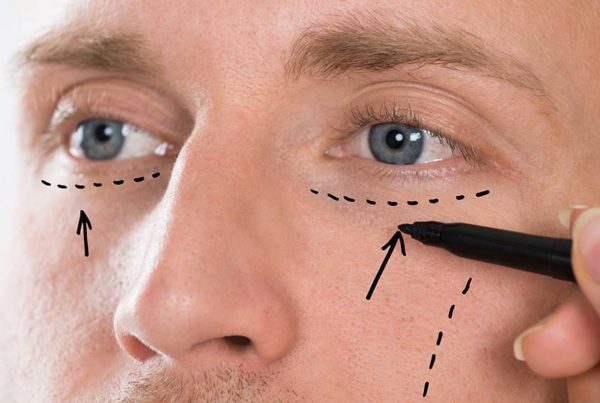
The modern facelift is almost nothing like it was when this type of surgery was invented more than 100 years ago. So, let’s talk about the history of the facelift, and how it came to be the procedure it is today.
The original facelifts were pretty much skin removal procedures. It was thought the best way to do them was to make an incision around the ears which could be covered by the hair – otherwise the skin removal scars would be in full view on the face. The scars evolved to be positioned from the hairline in the temple area, coming down around the front of the ear, around the earlobe and continued up the back of the ear, before going across back into the hair behind the ear. People would wear their hair over the ears and use large earrings to disguise their scars and hide the fact that they’d had a facelift.
The thinking behind this was to avoid incisions being made on the face itself. Once the incisions were made, the skin only was lifted off the deeper facial structures. The looser skin was pulled back and the excess skin trimmed. Then the remaining tighter skin was stitched into place, closing the wounds around the ears.
The truth is, these procedures didn’t often work that well. If skin laxity (loose skin) was the main issue, pulling or tightening the skin did help to improve the appearance of the face, but it didn’t really work for heavy faces, or people with significant facial sagging.
Surgeons began to realise that skin is not a particularly good material to use to hold something in place and reposition it. We know from other areas of the body, like the tummy or breasts, or even the way that the skin of the abdomen looks after a pregnancy, that the skin will stretch if it’s put under tension. So, early facelifts only really worked in the long term for people with a slim face and loose skin, without much sagging.
In the 1980s and ‘90s, a new technique was invented that produced a long-lasting result and addressed a much larger range of facial ageing and problems. It was discovered that the layer to lift was a deeper layer of the face which we now know as the SMAS layer. The original realisation of the role of the SMAS is attributed to Tord Skoog, a brilliant Swedish plastic surgeon. A number of other surgeons around the world worked to develop the understanding of the SMAS, and safe operations which produced superior, long lasting results.
To explain further, there are five basic layers of the face. Perhaps the best known are the skin and the subcutaneous tissue (the layer beneath the skin, which contains fat cells and is of variable thickness). The third is the SMAS layer, which is a thin sheet of muscles embedded in the face and attached by thin, strong tissue sheets connecting the face to the skull. The fourth layer is the retaining ligaments and spaces which connect the SMAS layer to the skull via anchoring points and has gliding planes. And the fifth and final layer is the periosteum, which is the living tissue sheet that covers the bone and adheres the soft tissue of the face to the bone.
Until the late 1980s and mid ‘90s when the SMAS surgeons started to operate more deeply in the face, surgeons believed that they couldn’t operate on the SMAS layer because it might damage the facial nerve. They knew that the facial nerve runs into the small muscles of the face in the SMAS layer, approaching the SMAS muscles from underneath them. The concern was that operating on this layer could cause facial deformity, and/or functional difficulties with the face – things like a drooping face, not being able to speak, drink or swallow well and not being able to close the eye properly.
The facial nerve is critical to the normal functioning of the face and its appearance because it supplies motor power to all the muscles of the face and of the neck. Realising that the SMAS layer could be operated on safely and without damaging the nerve was a huge step forward, because it meant that surgeons could now achieve long-lasting results.
Today’s facelifts are based around safe operations that are designed to reposition sagging facial structures or reshape structures that are not ideal, such as a sagging neck or a drooping eyebrow, by utilising the SMAS plane as the structure which moves and tightens the loosened facial structures. This provides a durable and natural appearance, without the need to pull on the skin in an unnatural way to achieve a result.
Whether the areas of concern are caused by ageing or genetic inheritance, they need to be reshaped in a way that respects and understands both the path and position of the facial nerves, so that they are not damaged.
Along with SMAS repositioning, there are many other small procedures involved in a facelift which help to ultimately make the face look better in a minimally detectable way. I’ll talk about these in another post.
P.S. If you’re thinking of having facelift surgery, check out my post next week. Does a facelift lift the face and find out what actually happens in a facelift.





